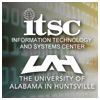OOSTethys - Open Source Software for the Global Earth Observing Systems of Systems
| Title | OOSTethys - Open Source Software for the Global Earth Observing Systems of Systems |
| Publication Type | Conference Paper |
| Year of Publication | 2009 |
| Authors | Bridger, E, Bermudez, LE, Maskey, M, Rueda, C, Babin, BL, Blair, R |
| Conference Name | American Geophysical Union |
| Date Published | 12/2009 |
| Conference Location | San Francisco, CA |
| Keywords | Open Source Software |
| Abstract | An open source software project is much more than just picking the right license, hosting modular code and providing effective documentation. Success in advancing in an open collaborative way requires that the process match the expected code functionality to the developer's personal expertise and organizational needs as well as having an enthusiastic and responsive core lead group. We will present the lessons learned from OOSTethys, which is a community of software developers and marine scientists who develop open source tools, in multiple languages, to integrate ocean observing systems into an Integrated Ocean Observing System (IOOS). OOSTethys' goal is to dramatically reduce the time it takes to install, adopt and update standards-compliant web services. OOSTethys has developed servers, clients and a registry. Open source PERL, PYTHON, JAVA and ASP tool kits and reference implementations are helping the marine community publish near real-time observation data in interoperable standard formats. In some cases publishing an OpenGeospatial Consortium (OGC), Sensor Observation Service (SOS) from NetCDF files or a database or even CSV text files could take only minutes depending on the skills of the developer. OOSTethys is also developing an OGC standard registry, Catalog Service for Web (CSW). This open source CSW registry was implemented to easily register and discover SOSs using ISO 19139 service metadata. A web interface layer over the CSW registry simplifies the registration process by harvesting metadata describing the observations and sensors from the “GetCapabilities” response of SOS. OPENIOOS is the web client, developed in PERL to visualize the sensors in the SOS services. While the number of OOSTethys software developers is small, currently about 10 around the world, the number of OOSTethys toolkit implementers is larger and growing and the ease of use has played a large role in spreading the use of interoperable standards compliant web services widely in the marine community. |
| URL | http://marinemetadata.org/community/teams/presence/presentations/agufm09-oost |
- Log in to post comments
- Google Scholar




